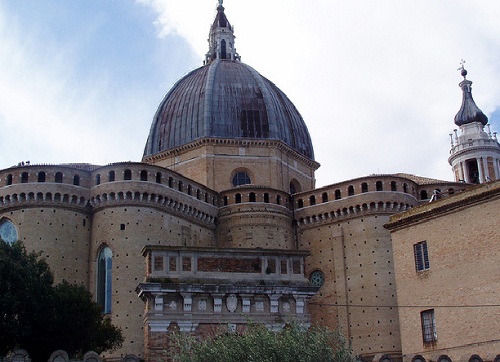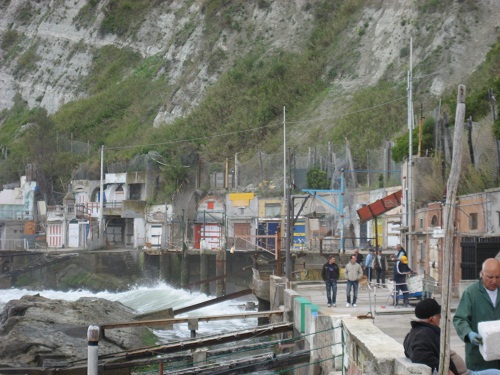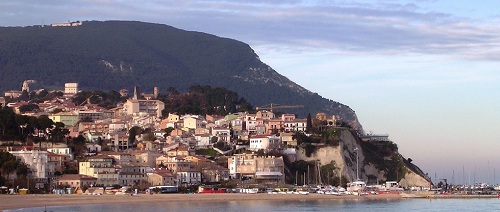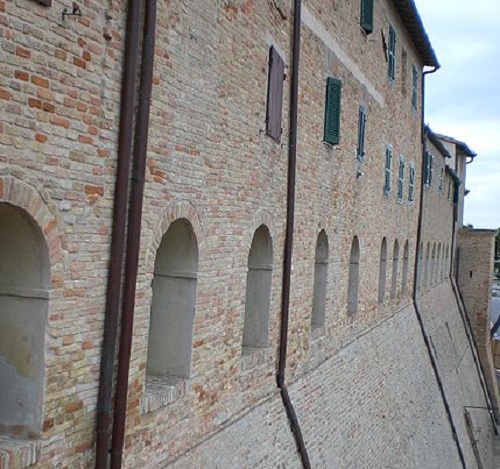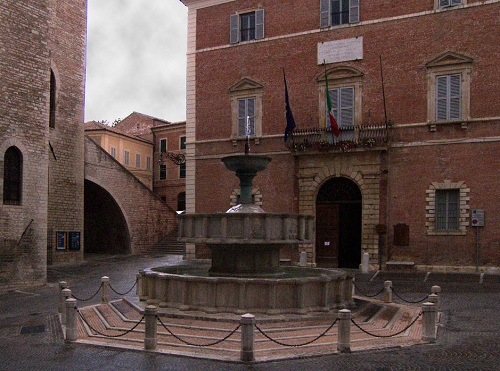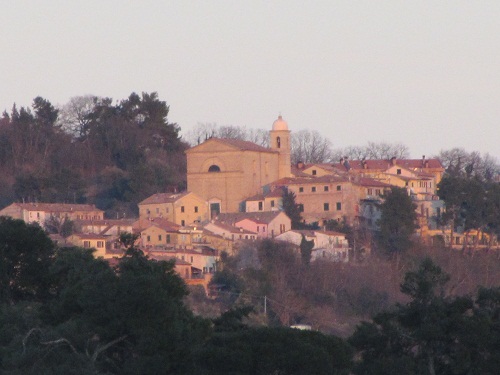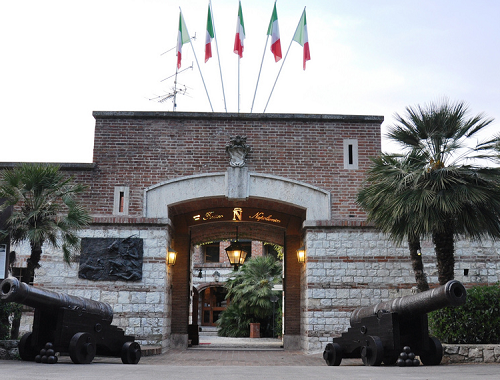The Sanctuary of Loreto Holy House
“The Loreto Holy House is the first Sanctuary of International importance dedicated to the Virgin and the true Marian heart of Christianity”.
(Pope John Paul II)
Loreto, a small town of Ancona Province, is known all over the world for its Sanctuary that makes it one of the most important places of pilgrimage and pray for the Catholics, together with Medjugorje and Lourdes. The believers go to Loreto to give prays of devotion to the ruins of the Holy House where Jesus lived in Nazareth.
On the basis of a former ancient tradition and latter historical and archeological researches, it is confirmed indeed that the Loreto Sanctuary keeps the Nazarene House of Mary; according to tradition, when in 1921 the crusaders were driven from Palestine out, the walls of the house of Mary were brought first to Illyria (to Tersatto, the present Croatia) and then to Loreto (10 December 1294).  The Holy House in its original core is composed only by three walls, because the eastern side – where the altar rises up – was opened towards the Cave.
The Holy House in its original core is composed only by three walls, because the eastern side – where the altar rises up – was opened towards the Cave.
Some documents recently found out are confirming the hypothesis that the sacred stones were shipped out to Loreto by the Angels (Angeli family) in 1294.
The three metres high walls are composed in their lower side by lines of sandstones originating by Nazareth, while the upper side stones are of local provenience. On the original stones from Nazareth there are quite sixty graffiti referable to the ones judaean-christian of remote epoch, existing in the whole Holy Land, included Nazareth itself. Whereas, the upper side local stones were covered by frescoes during XIV century.
The marble covering and enveloping the Holy House walls and commissioned by Giulio II, was realized by famous artists of Italian Renaissance and it is the master work of Loreto art. The Virgin with the Child statue is made of cedar of Lebanon wood and substitutes the one of the XIV century destroyed by fire in 1921.
Inside the Sanctuary you will admire:
The Dome – The Crucifix Chapel – the French Chapel or Sacrament’s – the Slavic Chapel or Cirillo and Metodio Saints – the Our Lady of the Assumption Chapel or American’s – the Choir Chapel or German’s – the Sacred Heart Chapel or Polish’s – the St John Sacristy or Signorelli’s – the Urbino Dukes Chapel – the St Joseph Chapel or Spanish’s – the Swiss Chapel or Gioacchino and Ann Saints – St Mark Sacristy or Melozzo’s – the side Chapels –the Treasure Room or Pomarancio’s.
The square outside the Sanctuary ends in the northern and western sides with the Apostles Palace, in the eastern side with the front of the Basilica, and in the southern side with the Illyrian Palace; on you r left hand you will admire the Bell Tower drawn by Luigi Vanvitelli; instead, in the middle there is the Fountain by Carlo Maderno and Giovanni Fontana.
We have to mention the impressive Basilica of Loreto Dome built in the octagonal drum, up to the eaves by Giuliano da Maiano; it was vaulted by Giuliano da Sangallo in only eight months, from September 1499 to May 1500.
For the ones that mean to go on pilgrimage to Loreto is provided a House of Welcome in the Illyrian Palace; it is a incoming structure with 231 beds (info and booking, please contact ph. no. +39 071 9747147).
The tourists are offered with several routes, such as the Basilica Tour, Museum’s, Communication Trench Walks’, and the timetable for GUIDED VISIT TOURS are the following:
October-March period:
– from 8 to 18 on Monday-Friday;
– from 8 to 15,30 Saturdays and before holidays;
– Saturdays and Public Holidays from 12,15 to 15,30;
April-September period:
– from 8 to 18 on Monday-Friday;
– from 8 to 15,30 Saturdays and before holidays;
– Saturdays and Public Holidays from 12,15 to 16,00;
for further inffo, please see on the web site: www.santuarioloreto.it
Further places to visit are:
– The Town Hall Bulwark – built in 1518-1519 under commission of Leone X, worried by the turkish invasions in the near Adriatic Sea.
– The Castle Walls and the Tower built in 1517-1520 designed by Antonio da Sangallo the Young.
– The Town Hall with its Civic Tower of the XVII century.
– The Roman Gateway (1590) and the Sea Gateway (XXVII century).
– Leopardi Square or “Gallic’s” and the Open Gallery built up in the second half of the eighteenth-century; this one was built in order to give hospitality to the pilgrims that came to the sanctuary by night and found town gateways already closed.
– John XXIII Square and its Sixteenth-century Portal projected and built up to be used as entrance in the Basilica faςade first and then moved (1580) in its current centre.
How to reach Loreto
By Airplane – Falconara Marittima Airport, from which is possible reach Loreto in thirty mins by taxi, or renting a car. Alternatively there is a Bus or Taxi Service up to Ancona railway station.
By Car – Highway “A14 Bologna-Taranto”, exit “Loreto-Porto Recanati”, and driving for about 3 kms.
By Train – Line “Ancona-Pescara”, Loreto railway station, or Bus Line Ancona-Loreto. Loreto is provided with a railway station afar about 2 kms from its historic centre, towards sea.

